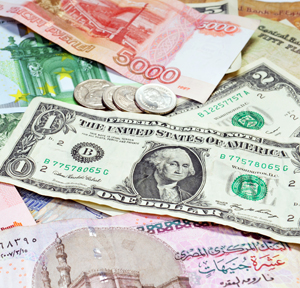WM Market Reports
HNW Individuals' Wealth, Numbers Grow; Markets Decouple From Real Economy

Unlike the financial hurricane of 2008, the pandemic of 2020 did not do lasting market damage and, as a result, the ranks and assets of high net worth individuals weren't hit. On the contrary, their wealth increased. These findings are in the 25th annual World Wealth Report from Capgemini.
The COVID-19 pandemic and policy responses to the crisis caused
global equities to oscillate violently in the spring of 2020.
However, evidence shows that as far as wealthy individuals are
concerned, their assets grew and there were more of them last
year.
In the 25th edition of its annual World Wealth Report,
issued today, Capgemini said that the
number of high net worth individuals rose 6.3 per cent last year,
and their total wealth rose by 7.6 per cent. The ultra-HNW
segment rose 9.6 per cent in numbers, and its total wealth
expanded by 9.1 per cent.
The figures point to a decoupling between financial markets –
often influenced by massive central bank money printing and
government fiscal stimuli – and the underlying real economy. The
pandemic accentuated this fact. Tech stocks, often benefiting
from the shift to working from home and social distancing, have
boomed.
And, in a move that has halted five years of Asian leadership,
North America again overtook the Asia-Pacific region to lead
total HNWI population and wealth, with 10.7 per cent and 11.9 per
cent growth, respectively, last year.
The 52-page report is the third of the “big three” annual wealth
studies in June –
Boston Consulting Group and Credit
Suisse being the authors of the other two. All three have
shown that whatever turmoil the pandemic and policy reactions
created, the fortunes of the HNW/UHNW populations in much of the
world have progressed. That is likely to be a politically
sensitive issue.
The Capgemini figures showed that last year, North America was
home to 7 million HNW individuals; for Asia, there were 6.9
million, Europe was home to 5.4 million; the Middle East had
800,000, Latin America 600,000 and Africa, 200,000. As for actual
wealth, North American HNW individuals held $24.3 trillion,
Asia-Pacific HNWIs had $24 trillion, Europeans $17.5 trillion,
Latin Americans had $8.8 trillion; Middle Eastern HNWIs had $3.2
trillion and Africans, $1.7 trillion.
An eye-catching feature of the report was growth in the UHNW
population cohort and wealth holdings. Factors driving this are
these individuals’ greater exposure to equities, and active
exploration of other market opportunities. For example, a study
by Capgemini in the first quarter of this year showed that UHNW
individuals parked 17.7 per cent of their portfolios in
alternative investments such as private equity, versus 11.8 per
cent for HNW individuals.
Financial markets rise above the real
economy
The report noted that in contrast to the financial market crash
of 2008/09, brought on by the implosion of sub-prime mortgages in
the US, the impact of the pandemic in 2020 has been markedly
different.
“The current crisis is profoundly different from the previous
global financial crises which were characterized by a major
financial shock that lasted a long time on the markets. In the
present scenario, the financial markets are already making a
recovery though there may be a more long-lasting impact on the
real economy,” Mario Buquicchio, head of wealth management,
Credit Agricole Italia, said in the report.
Who’s in the lead?
Reflecting on a quarter-century of its reports, Capgemini noted
how Asia overtook Europe and later North America as the world’s
wealthiest region, only to slip back behind North America in the
latest report.
.jpg)
Another theme running over the years has been how, Capgemini
said, HNW individuals are now more involved in their investments
and demanding how to grow their new, largely tech-driven wealth.
Meanwhile, one move in the past decade was how in the first half
of the 2010s, clients preferred to work with a single wealth
management firm and dedicated point of contact, a fact that
appeared to hold across the wealth spectrum.
As digital channels grew more mainstream, HNW clients wanted more
digital interaction and real-time reporting 24/7, but they
haven’t lost a desire for in-person contact. Client expectations
of what services they should receive have also
increased.
The report also noted how over the years and a range of mergers
and acquisitions, the world’s wealth industry remains in some
ways highly fragmented. 2020 was a busy year for large deals,
such as Morgan Stanley’s purchase of E*Trade and the Charles
Schwab acquisition of TD Ameritrade. The value of US investment
management M&A activity in 2020 was $28 billion, the highest
since 2000 when deals amounted to $29 billion.
Changing demographics
The report noted that the client profile is changing, with
younger, more tech-connected clients coming to the fore. The
share of women in the client pool is rising because of
inheritance and female entrepreneurship. In the US, for example,
there are 114 per cent more women entrepreneurs than 20 years
ago, and 40 per cent of US firms are owned by women.
In other areas, the Capgemini report examined areas such as how
the industry needs to keep improving clients’ experiences and
make better use of data, particularly given that HNW individuals’
expectations are shaped by other business sector
innovations.
Digitally savvy
“In the current digital marketplace, customers are more demanding
than before. Investors are searching for the intuitiveness,
personalization, and proactive interactions they have with
BigTechs from their wealth management firms,” Shaka Rasheed,
managing director, capital markets, US financial services,
Microsoft US, said in the report.
“Hyper-personalization is where the action is in wealth
management. For firms, there’s an opportunity to get closer to
clients by explaining the use of data and how it can be used to
hyper-personalize the client experience,” April Rudin, founder
and CEO, The Rudin Group, said. (Rudin is also a member of
Family Wealth Report’s editorial
advisory board.)
